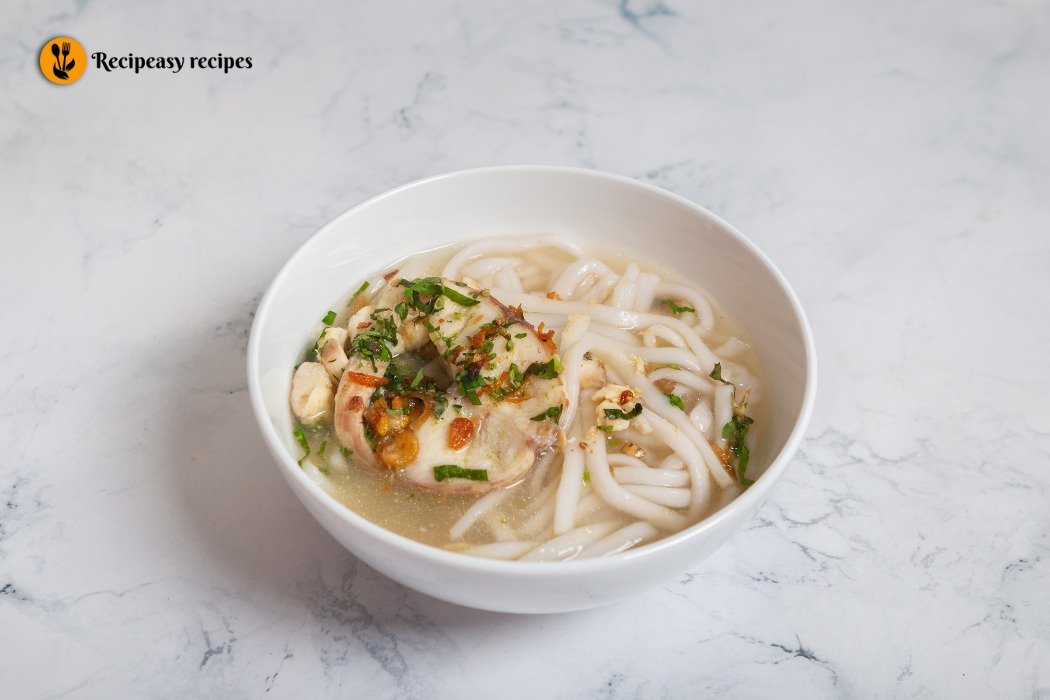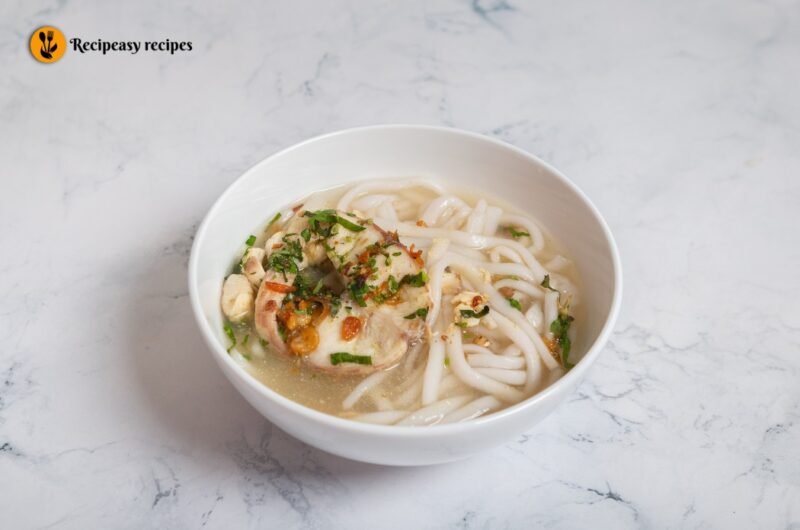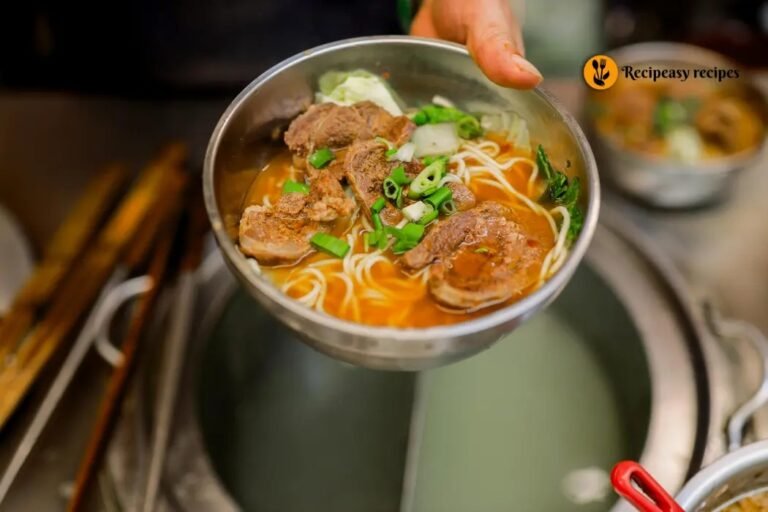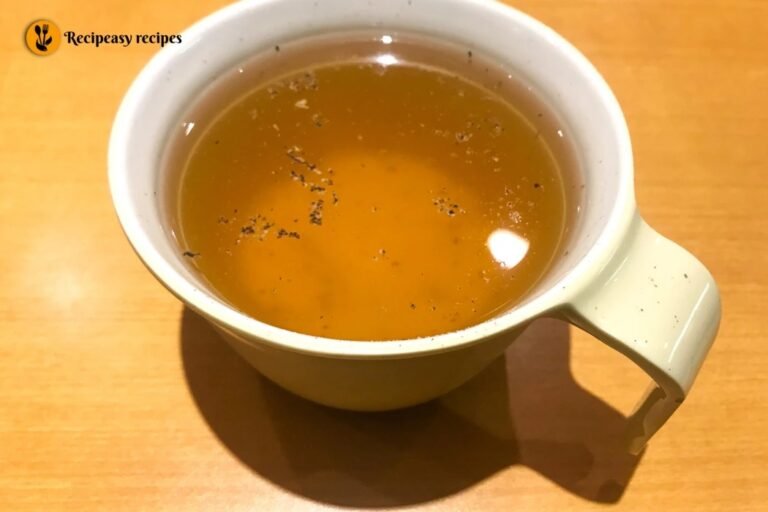Banh Canh Recipe | Authentic Vietnamese Thick Noodle Soup
Banh Canh Recipe is one of the most delicious and comforting Vietnamese soups I’ve ever made. I still remember the first time I cooked it at home the thick, chewy noodles soaked up the rich pork broth so perfectly that every bite felt cozy and heartwarming. The flavors were so bold and satisfying, it quickly became one of my go-to noodle soups.
What makes this dish even more special is how simple and flexible it is. Whether you’re making it on a cold evening or serving it for a weekend family meal, Banh Canh is always a great choice. If you’re craving a noodle soup that’s flavorful, nourishing, and full of character this recipe is a must-try.
History & Origin of Banh Canh Recipe
Banh Canh originated in central and southern Vietnam, where generations of home cooks created their own versions using fresh, local ingredients. The name “Banh Canh” translates to “thick noodles” and refers to the type of noodles made using tapioca flour or a combination of tapioca and rice flour. Once a humble street food, this dish has now become a household favorite across the country.
What is Banh Canh?
Banh Canh is a classic Vietnamese noodle soup known for its chewy, thick noodles paired with a fragrant, deeply savory pork-based broth. This comforting dish blends soft textures with fresh herbs and spices, creating a warm, soul-soothing experience.
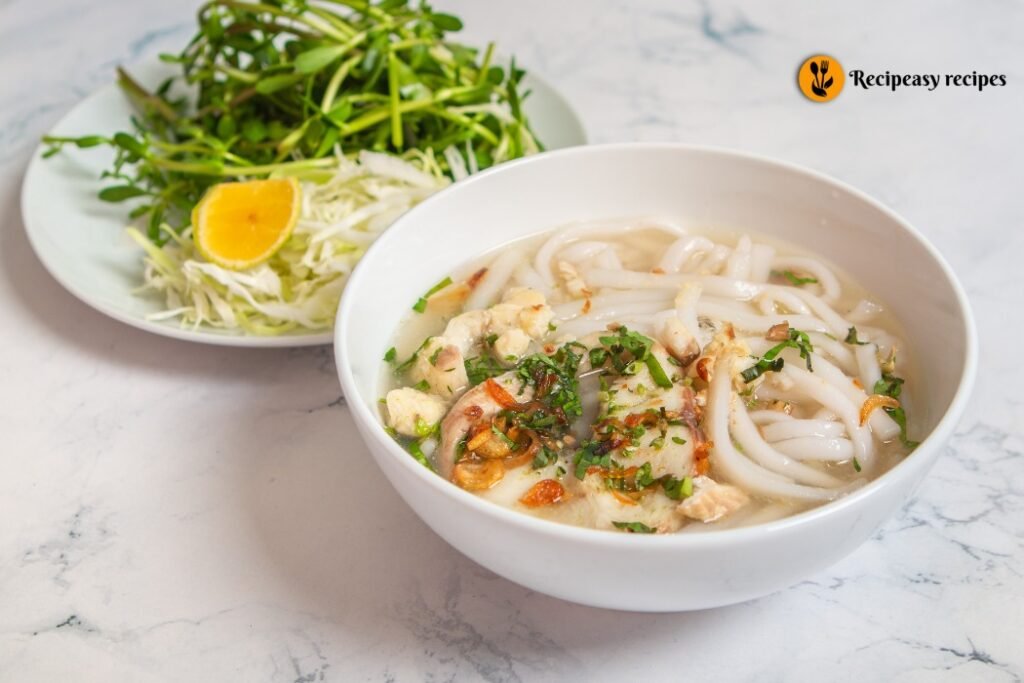
Why Try Banh Canh Recipe ?
If you enjoy hearty noodle soups with bold flavor and great texture, this dish will win you over. The thick noodles are fun to eat, and the homemade broth is packed with layers of savory goodness. It’s a dish that’s both comforting and satisfying, whether you’re cooking for yourself or loved ones.
You can easily adjust the ingredients to suit your preferences, making it as rich or as light as you like. Plus, preparing it at home is a fun and rewarding way to experience traditional Vietnamese cooking.
Equipment Needed
- Large Pot Perfect for simmering pork bones and making the broth.
- Strainer Helps remove any solids from the broth for a smooth texture.
- Mixing Bowl Useful if you’re making homemade noodles from scratch.
- Rolling Pin & Knife Needed to roll and cut noodles evenly if not using store-bought.
- Cooking Chopsticks or Tongs Makes it easy to stir the noodles and serve them.
- Soup Ladle Handy for portioning out broth into serving bowls.
Ingredients of Banh Canh
- 1 lb pork bones or pork hock
- 8 cups water
- 1 onion (halved)
- 2 cloves garlic (smashed)
- 1 tsp salt
- 1 tsp sugar
- 1 tbsp fish sauce
- ½ tsp black pepper
- 1 tbsp cooking oil
- Thick noodles (store-bought or homemade with tapioca and rice flour)
- Toppings: fried shallots, scallions, cilantro, red chili slices, lime wedges
How to Make Banh Canh Recipe (Step-by-Step)
Step 1: Clean the Pork Bones
Boil the pork bones for 5 minutes to remove impurities. Rinse the bones thoroughly under running water to ensure a cleaner, clearer broth.
Step 2: Make the Broth
Place the bones back into a large pot with 8 cups of water, then add onion, garlic, salt, and sugar. Let it simmer slowly for about 1.5 hours to develop deep, rich flavor. Near the end, stir in the fish sauce and a sprinkle of black pepper.
Step 3: Make the Noodle Dough (If Homemade)
Mix tapioca flour and rice flour with warm water until you form a soft, pliable dough. Knead until smooth and let it rest briefly.
Step 4: Cut the Noodles
Roll out the dough and slice into thick strips to form the signature chewy banh canh noodles.
Step 5: Cook the Noodles
Boil the noodles for about 8–10 minutes until tender and slightly translucent. Rinse with cold water immediately to keep them from sticking.
Step 6: Assemble the Bowl
Add a portion of the noodles to each serving bowl and pour in the hot, flavorful broth.
Step 7: Garnish and Serve
Finish with your choice of toppings: fresh herbs, a splash of lime, and a few slices of red chili for an extra burst of flavor.
Nutrition Information (Per Serving Approx.)
- Calories: 370 kcal
- Protein: 20g – Excellent for supporting muscle recovery and energy.
- Carbohydrates: 45g
- Fat: 14g
- Fiber: 2g
- Sodium: 880mg
How to Serve This Recipe
Serve Banh Canh hot in a deep bowl, showcasing its vibrant ingredients and fragrant broth. Add fresh herbs, a drizzle of lime juice, and spicy chili slices for that perfect final touch. Complement with light side dishes like pickled vegetables or fresh salad for a balanced meal.
Benefits of This Recipe
- High in protein: Ideal for building strength and maintaining energy levels.
- Easy to digest thanks to the clear broth and simple ingredients.
- Adaptable to dietary needs and preferences.
- A great way to enjoy authentic Vietnamese flavors at home.
- Excellent for sharing with family or meal prepping.

FAQs
Q1: Can I use beef or chicken instead of pork?
You can swap pork with beef bones or chicken for a different, rich flavor.
Q2: Is it okay to make the noodles in advance?
Yes, coat them lightly in oil and keep them in the fridge until ready to use.
Q3: How do I get a clear broth?
Blanch the bones first, rinse thoroughly, and skim during simmering.
Q4: Can I freeze Banh Canh?
Freeze the broth only avoid freezing the cooked noodles.
Q5: What toppings go best with this dish?
Top with fried shallots, scallions, herbs, lime, and spicy chili slices.
Conclusion
This soul-warming banh canh recipe brings comfort and bold Vietnamese flavor to your table. It’s a hearty noodle soup that’s as enjoyable to make as it is to eat. With chewy noodles, a savory broth, and fresh toppings, every spoonful feels like a warm hug and a taste of home.
Whether you’re diving into new dishes or reconnecting with traditional cooking, this recipe delivers on both flavor and cultural richness. With wholesome ingredients, satisfying texture, and thoughtful preparation, Banh Canh isn’t just a meal it’s a deeply comforting and delicious experience.
Banh Canh Recipe | Authentic Vietnamese Thick Noodle Soup
Course: SoupsCuisine: Vietnamese, AsianDifficulty: Medium4
servings25
minutes1
hour30
minutes370 kcal
kcalBanh Canh Recipe is a comforting Vietnamese noodle soup made with chewy thick noodles, rich pork broth, and fresh herbs perfect for a cozy main course.
Ingredients of Banh Canh
1 lb pork bones or pork hock
8 cups water
1 onion (halved)
2 cloves garlic (smashed)
1 tsp salt
1 tsp sugar
1 tbsp fish sauce
½ tsp black pepper
1 tbsp cooking oil
Thick noodles (store-bought or homemade with tapioca and rice flour)
Toppings: fried shallots, scallions, cilantro, red chili slices, lime wedges
How to Make Banh Canh Recipe (Step-by-Step)
- Clean the Pork Bones
Boil the pork bones for 5 minutes to remove impurities. Rinse the bones thoroughly under running water to ensure a cleaner, clearer broth. - Make the Broth
Place the bones back into a large pot with 8 cups of water, then add onion, garlic, salt, and sugar. Let it simmer slowly for about 1.5 hours to develop deep, rich flavor. Near the end, stir in the fish sauce and a sprinkle of black pepper. - Make the Noodle Dough (If Homemade)
Mix tapioca flour and rice flour with warm water until you form a soft, pliable dough. Knead until smooth and let it rest briefly. - Cut the Noodles
Roll out the dough and slice into thick strips to form the signature chewy banh canh noodles. - Cook the Noodles
Boil the noodles for about 8–10 minutes until tender and slightly translucent. Rinse with cold water immediately to keep them from sticking. - Assemble the Bowl
Add a portion of the noodles to each serving bowl and pour in the hot, flavorful broth. - Garnish and Serve
Finish with your choice of toppings: fresh herbs, a splash of lime, and a few slices of red chili for an extra burst of flavor.
Notes
- Always blanch pork bones first to keep broth clear.
- If short on time, use store-bought thick noodles instead of homemade.
- Add shrimp, crab, or fish cakes for a seafood twist.
- Leftover broth can be frozen in small portions for future use.
